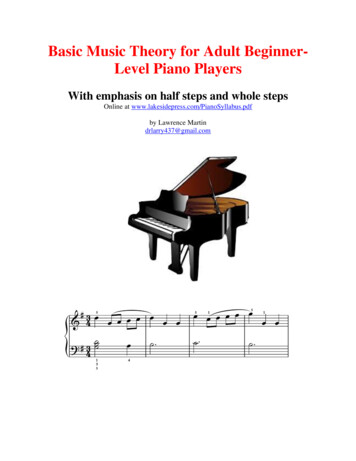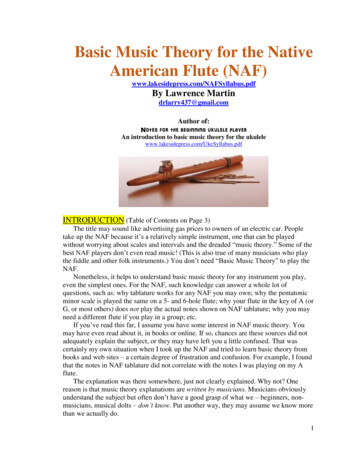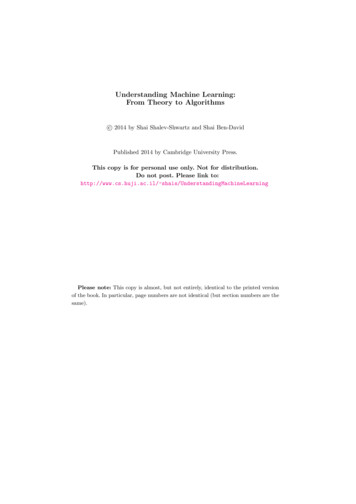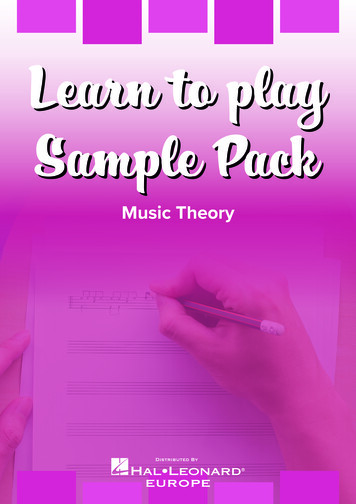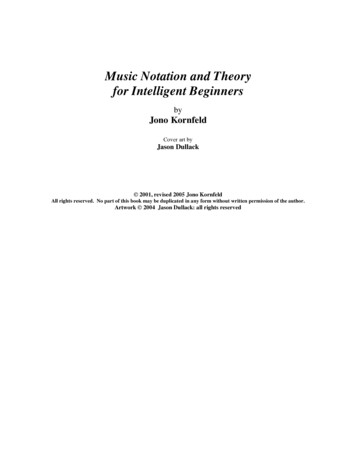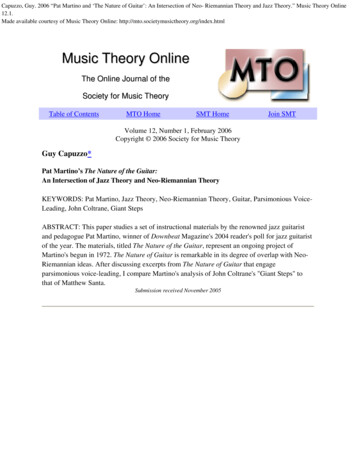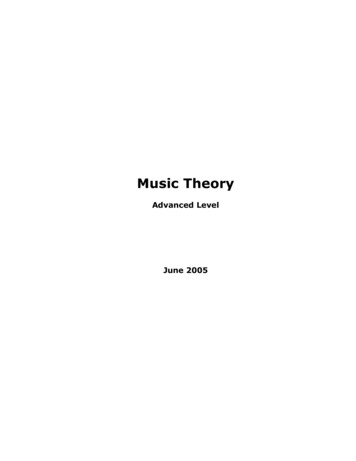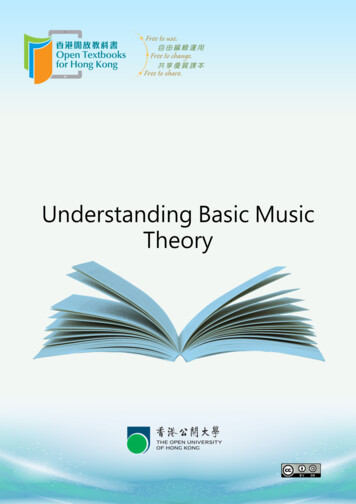
Transcription
Understanding Basic MusicTheory
Catherine Schmidt-JonesPrinting HistoryFebruary 2015: Adopted by Open Textbooks SystemThis work is licensed under a Creative Commons-ShareAlike 4.0 International LicenseOriginal source: CONNEXIONShttp://cnx.org/content/col10363/1.3/
ContentsPreface .1Chapter 1 Notation .31.1 Pitch .31.1.1 The Staff.31.1.1.1 The Staff .31.1.1.2 Groups of staves .41.1.2 Clef .61.1.2.1 Treble Clef and Bass Clef.61.1.2.2 Memorizing the Notes in Bass and Treble Clef .61.1.2.3 Moveable Clefs .81.1.2.4 Why use different clefs? .91.1.3 Pitch: Sharp, Flat, and Natural Notes .111.1.4 Key Signature .14Example .161.1.5 Enharmonic Spelling .171.1.5.1 Enharmonic Notes .171.1.5.2 Enharmonic Keys and Scales .191.1.5.3 Enharmonic Intervals and Chords .211.1.5.4 Enharmonic Spellings and Equal Temperament .211.2 Time .221.2.1 Duration: Note Lengths in Written Music .221.2.1.1 The Shape of a Note .221.2.1.2 The Length of a Note .23Example .25Example .261.2.1.3 More about Stems .261.2.2 Duration: Rest Length .271.2.3 Time Signature.281.2.3.1 Beats and Measures .28Example .291.2.3.2 Meter: Reading Time Signatures .29Example .301.2.3.3 Counting and Conducting .311.2.4 Meter .321.2.4.1 What is Meter? .321.2.4.2 Classifying Meters .331.2.4.3 Recognizing Meters.341.2.5 Pickup Notes and Measures .341.2.5.1 Pickup Measures .341.2.5.2 Pickup Notes .351.2.6 Dots, Ties, and Borrowed Divisions.361.2.6.1 Dotted Notes .361.2.6.2 Tied Notes .37
1.2.6.3 Borrowed Divisions .381.2.7 Syncopation .391.2.8 Tempo .411.2.8.1 Metronome Markings .411.2.8.2 Tempo Terms.421.2.8.3 Gradual Tempo Changes.431.2.8.4 Repeats and Other Musical Road Map Signs .44Example .471.3 Style .471.3.1 Dynamics and Accents .471.3.1.1 Dynamics.471.3.1.2 Accents .491.3.2 Articulation .501.3.2.1 What is Articulation? .501.3.2.2 Performing Articulations .501.3.2.3 Common Articulations.511.4 Solutions to Exercises in Chapter 1 .54Chapter 2 Definitions .602.1 Rhythm.602.2 Timbre.612.3 Melody .622.3.1 Introduction .622.3.2 The Shape or Contour of a Melody .632.3.3 Melodic Motion.632.3.4 Melodic Phrases .642.3.5 Motif.662.3.6 Melodies in Counterpoint.672.3.7 Themes .672.3.8 Suggestions for Presenting these Concepts to Children .682.4 Texture .682.4.1 Introduction .682.4.2 Terms that Describe Texture .692.4.2.1 Monophonic.692.4.2.2 Homophonic .692.4.2.3 Polyphonic.702.4.2.4 Heterophonic .702.4.3 Suggested Listening .712.5 Harmony .712.6 Counterpoint .742.6.1 Introduction .742.6.2 Some useful terms .752.7 Range .762.7.1 Introduction .762.7.2 Vocal Ranges .772.7.3 Instrumental Ranges.782.8 Classifying Music .79
2.8.1 Western and Non-Western .792.8.2 Jazz, Blues, and World Music.802.8.3 Tonal, Atonal, and Modal Music .812.8.4 Classical and Art Music .822.8.5 Folk and Popular music .832.8.6 Suggestions for Listening and Further Study .842.8.6.1 Tonal, Atonal, and Modal Music .842.8.6.2 Western Classical .842.8.6.3 Non-Western Classical .852.8.6.4 Western Folk .852.8.6.5 Non-Western Folk .852.8.6.6 Music that Combines Western and Non-Western Traditions .85Chapter 3 The Physical Basis .873.1 Acoustics for Music Theory .873.1.1 Music is Organized Sound Waves.873.1.2 Longitudinal and Transverse Waves .883.1.3 Wave Amplitude and Loudness .903.1.4 Wavelength, Frequency, and Pitch .903.2 Standing Waves and Musical Instruments .923.2.1 What is a Standing Wave?.923.2.2 Standing Waves on Strings.943.2.3 Standing Waves in Wind Instruments.973.2.4 Standing Waves in Other Objects.993.3 Harmonic Series I: Timbre and Octaves . 1003.3.1 Introduction . 1003.3.2 Physics, Harmonics and Color . 1003.3.3 The Harmonic Series. 1033.4 Solu
Understanding Basic Music Theory. This document was created with Prince, a great way of getting web content onto paper.

